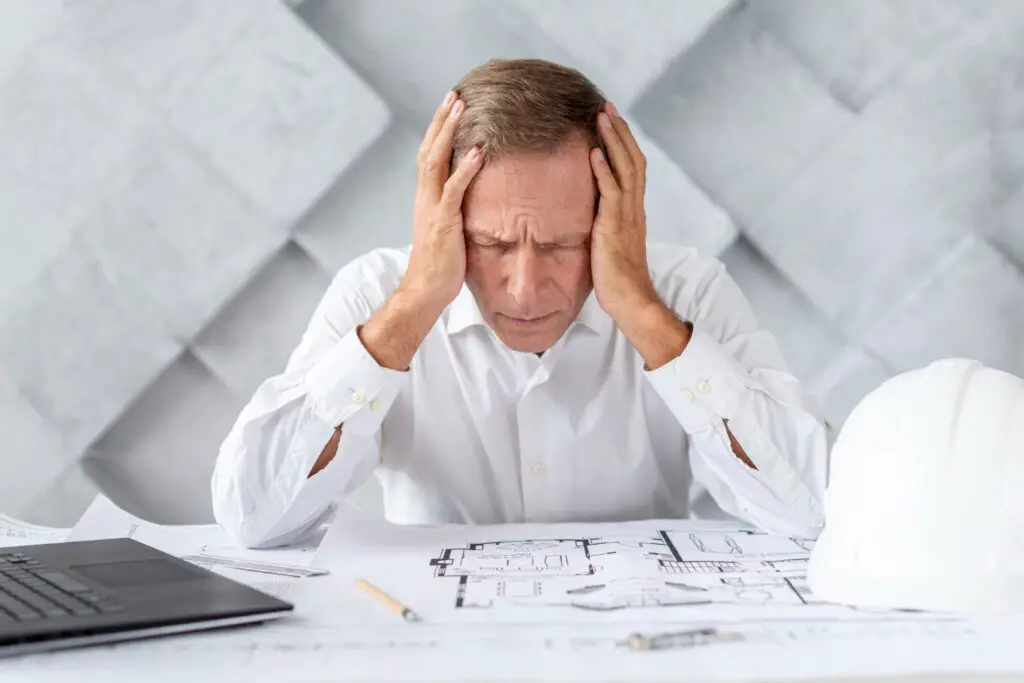Starting a construction project is exciting—but it can quickly become overwhelming if you don’t plan correctly. From home builds to commercial developments, even experienced project owners and developers can fall into costly, time-consuming traps.
At Shumac, we’ve worked on dozens of projects, and we’ve seen first-hand how small oversights can snowball into major setbacks. In this comprehensive guide, we’ll walk you through the seven most common mistakes made during construction projects—and how you can avoid them like a pro.
🔨 1. Skipping the Planning Phase
The Mistake:
One of the most frequent and expensive mistakes is diving into construction without a detailed plan. Some owners think they can “figure it out as they go”—but without a blueprint, every next step becomes a guess.
Real-Life Consequence:
A client we worked with started renovations without architectural drawings or permits. Two months in, city inspectors shut the site down—costing them $8,000 in delays and fines.
The Fix:
- Hire a licensed architect or structural engineer early on.
- Finalize architectural drawings, floor plans, and elevations.
- Create a phased schedule (e.g., demolition, framing, plumbing, electrical, etc.).
- Use tools like Buildertrend, Monday.com, or CoConstruct to manage timelines and track progress.
- Don’t forget to get permits before breaking ground.
📌 Pro Tip: A solid plan saves you 10x more money than rushing into construction with guesswork.
💰 2. Choosing the Cheapest Contractor
The Mistake:
Price is important—but going with the lowest bidder often leads to cut corners, unlicensed work, or even scams. What looks like savings upfront can become a nightmare later.
Warning Signs:
- Vague or incomplete quotes
- No license or insurance
- Refuses to provide references or a contract
The Fix:
- Always ask for at least three quotes from different contractors.
- Verify licenses through your state’s contractor board.
- Ask for a portfolio of past projects and at least three client references.
- Read online reviews on platforms like Houzz, HomeAdvisor, or Yelp.
✅ Good contractors never pressure you to commit on the spot—and they provide contracts in writing.
📉 3. Poor Budgeting & No Contingency Plan
The Mistake:
Many owners create a budget based only on material and labor quotes, without accounting for the unexpected: material price hikes, delays, or change orders.
What Usually Goes Wrong:
- Hidden structural issues during demolition
- Upgrades or design changes mid-project
- Permit delays or inspection failures
The Fix:
- Set a baseline budget, then add a 10–20% contingency fund.
- Itemize every line of cost: labor, materials, permits, site prep, disposal, etc.
- Ask your contractor for a fixed-bid contract instead of open-ended T&M (time and material) pricing.
- Use budgeting tools like Construction Cost Estimator or BuildBook.
💡 Want a free downloadable budgeting template? [Add link here when ready.]
🧱 4. Using Low-Quality Materials
The Mistake:
Using cheap or unproven materials may lower your upfront costs—but leads to repairs, replacements, and frustration later. Cutting corners here can affect structural integrity and energy efficiency.
Examples of Low-Quality Choices:
- MDF trim instead of solid wood
- Low-grade drywall or insulation
- Generic fasteners or off-brand sealants
The Fix:
- Choose materials based on performance, warranty, and long-term durability—not just cost.
- Consult with your architect or project manager before approving substitutions.
- Ask suppliers for samples to compare quality.
🏡 For homes, prioritize quality in the foundation, roofing, windows, and insulation—these impact performance the most.
🏢 5. Ignoring Local Building Codes & Permits
The Mistake:
Trying to skip permits or not adhering to building codes can shut your project down, lead to legal trouble, or invalidate your insurance.
Case in Point:
A client skipped permit applications to “save time.” When their property flooded, their insurance claim was denied—because the structural changes weren’t legally documented.
The Fix:
- Research your city or county’s permit requirements before beginning.
- Hire professionals who know and comply with local zoning and building regulations.
- Keep copies of every permit and inspection report in a shared digital folder.
⚠️ Even small changes like fences, decks, or sheds may require approval—check before you build.
📞 6. Lack of Communication With the Team
The Mistake:
Many owners trust their contractor to “handle everything,” and check in only when something goes wrong. But poor communication leads to misunderstandings, delays, and budget blowouts.
What This Looks Like:
- Workers showing up without materials
- Subcontractors unclear on timelines
- The wrong tile or flooring installed due to poor communication
The Fix:
- Schedule weekly check-ins or site meetings.
- Use tools like Slack, WhatsApp, or Trello to communicate quickly and clearly.
- Assign one point of contact for decisions and approvals.
- Document everything: emails, change requests, and scope adjustments.
🧰 Clear, consistent communication is the #1 way to avoid expensive mistakes.
⚠️ 7. Neglecting Construction Site Safety
The Mistake:
A messy or unsafe worksite risks accidents, delays, and lawsuits. Even if you’re not the one doing the labor, you can be held liable for unsafe conditions on your property.
Common Safety Issues:
- No hard hats or eye protection
- Trip hazards like cords or debris
- Open trenches without barriers
The Fix:
- Ensure your contractor follows OSHA guidelines for residential or commercial sites.
- Keep a first-aid kit, fire extinguisher, and safety signage on site.
- Conduct regular site walkthroughs and keep areas tidy.
🔐 Safety doesn’t slow down projects—it keeps them running.
🧠 Final Thoughts: Building Smarter, Not Just Faster
Construction success isn’t just about big budgets or flashy designs—it’s about avoiding preventable mistakes. With proper planning, strong communication, and the right team, your project can stay on track and deliver lasting value.
At Shumac, we believe that smarter construction starts with knowledge and preparation. That’s why we’re building a resource hub for homeowners, builders, and developers who want to do it right the first time.


